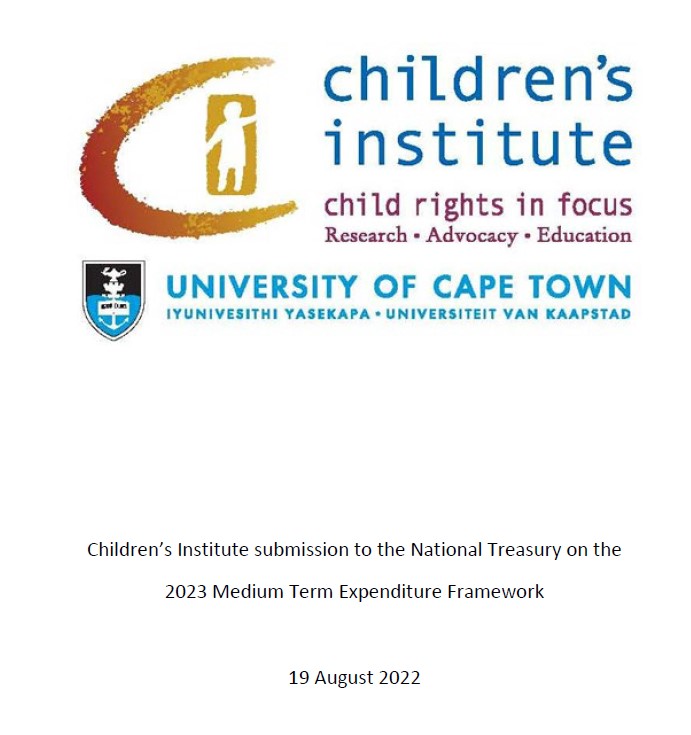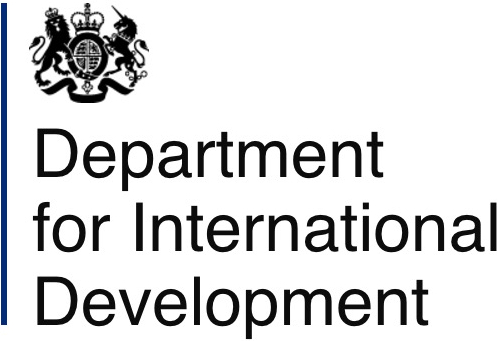Definition
“NEETs” is a term used to describe young people who are Not in Employment, Education or Training. The definition used here is youth aged 15–24 who are not attending any educational institution and who are not employed or self-employed.
Data
Source
Statistics South Africa (2003 – 2025) General Household Survey 2002 – 2024. Pretoria, Cape Town: Statistics South Africa.
Analysis by Katharine Hall & Sumaiyah Hendricks, Children’s Institute, University of Cape Town.
Analysis by Katharine Hall & Sumaiyah Hendricks, Children’s Institute, University of Cape Town.
What do the numbers tell us?
“NEETs” is a term used to describe young people who are Not in Employment, Education or Training.1 Widespread concerns about the large numbers of youth in this situation centre on two main issues: the perpetuation of poverty and inequality, including intergenerational poverty; and the possible implications of a large “idle” youth population for risk behaviour, social cohesion and the safety of communities.
Little is known about what NEETs do with their time. Young people who are neither learning nor engaged in income-generating activities may nevertheless be “productive” within their households, for example by helping to maintain the home or looking after children and others in need of care. However, in the absence of income, NEETs remain dependent on the earnings of other household members, and on grants that are directed to children and the elderly. The Old Age Pension in particular has been found to support job-seeking activities for young people2 and it has been argued that this unenvisaged expenditure of the grant could be addressed by extending social security to unemployed youth.3
The large number of NEETs in South Africa is linked to underlying problems in the education system and the labour market. Young people in South Africa have very high participation rates in education, including at secondary level. Enrolment rates for Grades 11 and 12 have increased in recent years and more young people attain Grade 12 (and at an earlier age).4 But there is still a sharp drop-off in enrolment numbers after Grade 10 and only about half of young people in their early twenties have successfully completed Grade 12.5 This reduces prospects for further study or employment.6 Low quality and incomplete education represent what are termed the “supply-side” drivers of youth unemployment, where young people do not have the appropriate skills or work-related capabilities to be employable or to set up successful enterprises of their own, and so struggle to make the transition from education to work.7 The “demand-side” driver relates to a shortage of jobs or self-employment opportunities for those who are available to work.
In 2022, there were 9.9 million young people aged 15 – 24 in South Africa. Of these, 34% (3.4 million) were neither working nor enrolled in any education institution such as a school, university or college. The number of young people nationally who are not in education, training or employment has remained remarkably consistent over the last decade, but has increased since the beginning of democracy when only two million NEETs were recorded in 1996.8 South Africa has made no progress towards what is now an explicit target of the Sustainable Development Goals, namely to substantially reduce the proportion of youth not in employment, education or training by 2030.9 If anything, the number of NEETs has increased marginally.
The NEET rates are quite consistent across the provinces. This is hard to interpret without further information. Limpopo, for example, is a very poor and largely rural province where one might expect high rates of unemployment. It is possible that the slightly lower-than-average percentage of NEETs in that province is partly the result of young people migrating to cities in Gauteng or other provinces in search of work and they therefore being counted among the NEETs elsewhere. It is also possible that young people who are not employed in the labour market may nevertheless be employed in small-scale agriculture if their household has access to land, and this could also help to smooth the provincial and spatial inequalities that are characteristic of many other indicators.
There is enormous variation within the broad youth group of 15 – 24 years. Only 5% of children aged 15 – 17 are classified as NEET because the majority are attending school. Within the 18 – 20 age band, 38% are NEETs, and more than half (57%) of those in the 21 – 24 age band are neither working nor in education or training.
While education attendance rates are fairly even for males and females, the gender disparity among NEETs is significant. Thirty-six percent of young women are not in employment, education or training – compared with 32% of young men.
1 Organisation for Economic Co-operation and Development. Youth Not in Employment, Education or Training (NEET).
2 Ardington C, Bärninghausen A, Case A, Menendez A. Social Protection and Labour Market Outcomes of Youth in South Africa. Working Paper 96. Cape Town: Southern Africa Labour & Development Research Unit, UCT. 2013.
3 Altman M, Mokomane Z, Wright G. Social security for young people amidst high poverty and unemployment: Some policy options for South Africa. Development Southern Africa. 2014, 31(2):347-362.
4 Department of Basic Education. Report on Progress in the Schooling Sector against Key Learner Performance and Attainment Indicators. Pretoria: DBE. 2016.
5 Youth Explorer. Youth Explorer: 2018. Accessed: 20 September. Available from: https://youthexplorer.org.za/profiles/country-ZA-south-africa/#education. And see DBE above.
6 Timaeus I, Moultrie T. Teenage childbearing and educational attainment in South Africa. Studies in Family Planning. 2015, 46(2):143-160.
7 Smith J. Connecting Young South Africans to Opportunity: Literature Review and Strategy. Cape Town: DG Murray Trust. 2011.
Lam D, Leibbrandt M, Mlatsheni C. Education and Youth Unemployment in South Africa. Working Paper 22. Cape Town: Southern Africa Labour and Development Research Unit, UCT. 2008.
8 Department of Higher Education and Training. Fact Sheet on NEETs: An Analysis of the 2011 South African Census. Pretoria: DHET. 2013.
9 United Nations Development Programme. Sustainable Development Goals. 2017. www.undp.org/content/undp/en/home/sustainable-development-goals.html
Little is known about what NEETs do with their time. Young people who are neither learning nor engaged in income-generating activities may nevertheless be “productive” within their households, for example by helping to maintain the home or looking after children and others in need of care. However, in the absence of income, NEETs remain dependent on the earnings of other household members, and on grants that are directed to children and the elderly. The Old Age Pension in particular has been found to support job-seeking activities for young people2 and it has been argued that this unenvisaged expenditure of the grant could be addressed by extending social security to unemployed youth.3
The large number of NEETs in South Africa is linked to underlying problems in the education system and the labour market. Young people in South Africa have very high participation rates in education, including at secondary level. Enrolment rates for Grades 11 and 12 have increased in recent years and more young people attain Grade 12 (and at an earlier age).4 But there is still a sharp drop-off in enrolment numbers after Grade 10 and only about half of young people in their early twenties have successfully completed Grade 12.5 This reduces prospects for further study or employment.6 Low quality and incomplete education represent what are termed the “supply-side” drivers of youth unemployment, where young people do not have the appropriate skills or work-related capabilities to be employable or to set up successful enterprises of their own, and so struggle to make the transition from education to work.7 The “demand-side” driver relates to a shortage of jobs or self-employment opportunities for those who are available to work.
In 2022, there were 9.9 million young people aged 15 – 24 in South Africa. Of these, 34% (3.4 million) were neither working nor enrolled in any education institution such as a school, university or college. The number of young people nationally who are not in education, training or employment has remained remarkably consistent over the last decade, but has increased since the beginning of democracy when only two million NEETs were recorded in 1996.8 South Africa has made no progress towards what is now an explicit target of the Sustainable Development Goals, namely to substantially reduce the proportion of youth not in employment, education or training by 2030.9 If anything, the number of NEETs has increased marginally.
The NEET rates are quite consistent across the provinces. This is hard to interpret without further information. Limpopo, for example, is a very poor and largely rural province where one might expect high rates of unemployment. It is possible that the slightly lower-than-average percentage of NEETs in that province is partly the result of young people migrating to cities in Gauteng or other provinces in search of work and they therefore being counted among the NEETs elsewhere. It is also possible that young people who are not employed in the labour market may nevertheless be employed in small-scale agriculture if their household has access to land, and this could also help to smooth the provincial and spatial inequalities that are characteristic of many other indicators.
There is enormous variation within the broad youth group of 15 – 24 years. Only 5% of children aged 15 – 17 are classified as NEET because the majority are attending school. Within the 18 – 20 age band, 38% are NEETs, and more than half (57%) of those in the 21 – 24 age band are neither working nor in education or training.
While education attendance rates are fairly even for males and females, the gender disparity among NEETs is significant. Thirty-six percent of young women are not in employment, education or training – compared with 32% of young men.
1 Organisation for Economic Co-operation and Development. Youth Not in Employment, Education or Training (NEET).
2 Ardington C, Bärninghausen A, Case A, Menendez A. Social Protection and Labour Market Outcomes of Youth in South Africa. Working Paper 96. Cape Town: Southern Africa Labour & Development Research Unit, UCT. 2013.
3 Altman M, Mokomane Z, Wright G. Social security for young people amidst high poverty and unemployment: Some policy options for South Africa. Development Southern Africa. 2014, 31(2):347-362.
4 Department of Basic Education. Report on Progress in the Schooling Sector against Key Learner Performance and Attainment Indicators. Pretoria: DBE. 2016.
5 Youth Explorer. Youth Explorer: 2018. Accessed: 20 September. Available from: https://youthexplorer.org.za/profiles/country-ZA-south-africa/#education. And see DBE above.
6 Timaeus I, Moultrie T. Teenage childbearing and educational attainment in South Africa. Studies in Family Planning. 2015, 46(2):143-160.
7 Smith J. Connecting Young South Africans to Opportunity: Literature Review and Strategy. Cape Town: DG Murray Trust. 2011.
Lam D, Leibbrandt M, Mlatsheni C. Education and Youth Unemployment in South Africa. Working Paper 22. Cape Town: Southern Africa Labour and Development Research Unit, UCT. 2008.
8 Department of Higher Education and Training. Fact Sheet on NEETs: An Analysis of the 2011 South African Census. Pretoria: DHET. 2013.
9 United Nations Development Programme. Sustainable Development Goals. 2017. www.undp.org/content/undp/en/home/sustainable-development-goals.html
Technical notes
This indicator refers to the number and proportion of young people in South africa aged 15 - 24 years who are not in employment, education or training. The proportions are calculated by dividing the number of NEETs per category by the total number of young people in the population.
The population numbers are drawn from the General Household Survey after person weights are applied. The person weights are calculated to yield the mid-year population figures for each year, as estimated by Statistics South Africa.
The population numbers are drawn from the General Household Survey after person weights are applied. The person weights are calculated to yield the mid-year population figures for each year, as estimated by Statistics South Africa.
Strengths and limitations of the data
The numbers are derived from the General Household Survey, a multi-purpose annual survey conducted by the national statistical agency, Statistics South Africa, to collect information on a range of topics from households in the country’s nine provinces.
The GHS uses a Master Sample frame which has been developed as a general-purpose household survey frame that can be used by all other Stats SA household-based surveys that have design requirements that are reasonably compatible with the GHS. The sample is drawn from Census enumeration areas using a stratified two-stage design with probability proportional to size sampling of PSUs in teh first stage, and sampling of dwelling units with systematic sampling in the second stage. The resulting sample consists of just over 20,000 households with around 70,000 individuals, and should be representative of all households in South Africa. It is also designed to be representative at provincial level and within provinces at metro/non-metro levels and three geography types (urban areas, rural areas under traditional authority, and farms).
The sample consists of households and does not cover other collective institutionalised living-quarters such as boarding schools, orphanages, students’ hostels, old-age homes, hospitals, prisons, military barracks and workers’ hostels. These exclusions probably do not have a noticeable impact on the findings in respect of children.
Changes in sample frame and stratification
Since 2014 the GHS has been based on the 2013 master sample that that is, in turn, based on information collected during the 2011 Population Census. The previous master sample for the GHS was used for the first time in 2008, and the one before that in 2004. These again differed from the master sample used in the first two years of the GHS: 2002 and 2003. Thus there have been four different sampling frames during history of the annual GHS, with the changes occurring in 2004, 2008 and 2013. In addition, there have been changes in the method of stratification over the years. These changes could compromise comparability across iterations of the survey to some extent, although it is common practice to use the GHS for longitudinal monitoring and many of the official trend analyses are drawn from this survey.
Weights
Person and household weights are provided by Stats SA and are applied in Children Count analyses to give population estimates on the indicators. The GHS weights are derived from Stats SA’s mid-year population estimates for the relevant year. The population estimates are based on a model that is revised from time to time when it is possible to calibrate the population model to Census data and larger population surveys such as the Community Survey.
In 2017, Stats SA revised its demographic model to produce a new series of mid-year population estimates and the GHS data were re-released with the revised population weights. All the Children Count indicators were re-analysed retrospectively, using the revised weights provided by Stats SA, based on the 2013 model. The estimates are therefore comparable over all years. The revised weights particularly affected estimates for the years 2002 – 2007.
The 2017 model drew on the 2011 census, along with vital registration, antenatal and other administrative data, but was a “smoothed” model that did not mimic the unusual shape of the age distribution found in the census. The results of the 2011 census were initially distrusted because it seemed to over-count children in the 0 – 4 age group and under-count children in the 4 – 14-year group. It is now thought that the fertility rates recorded in the 2011 population census may have been an accurate reflection of demopraphic trends, with an unexplained upswing in fertility around 2009 after which fertility rates declined again gradually. Similar patterns were found in the vital registration data as more births were reported retrospectively to the Department of Home Affairs, and in administrative data from schools, compiled by the Department of Basic Education. In effect, this means that there may be more children in South Africa than appear from the analyses presented in these analyses, where we have applied weights based on a model that it is now known to be inaccurate.
Stats SA has subsequently developed a new population model - the 2022 series, which provides revised mid-year population estimates back to 2002 and projected to 2032. However, the GHS series has not yet been reweighted.The population estimates in Children Count are therefore based on weights derived from outdated population model (2017). It is not yet clear when and how the population model will be revised again following the 2022 Census, as there are concerns around census under-count and plausibility of its findings.
Disaggregation
Statistics South Africa suggests caution when attempting to interpret data generated at low level disaggregation. The population estimates are benchmarked at the national level in terms of age, sex and population group while at provincial level, benchmarking is by population group only. This could mean that estimates derived from any further disaggregation of the provincial data below the population group may not be robust enough.
Reporting error
Error may be present due to the methodology used, i.e. the questionnaire is administered to only one respondent in the household who is expected to provide information about all other members of the household. Not all respondents will have accurate information about all children in the household. In instances where the respondent did not or could not provide an answer, this was recorded as “unspecified” (no response) or “don’t know” (the respondent stated that they didn’t know the answer).
For more information on the methods of the General Household Survey, see the metadata for the respective survey years, available on Nesstar or DataFirst
The GHS uses a Master Sample frame which has been developed as a general-purpose household survey frame that can be used by all other Stats SA household-based surveys that have design requirements that are reasonably compatible with the GHS. The sample is drawn from Census enumeration areas using a stratified two-stage design with probability proportional to size sampling of PSUs in teh first stage, and sampling of dwelling units with systematic sampling in the second stage. The resulting sample consists of just over 20,000 households with around 70,000 individuals, and should be representative of all households in South Africa. It is also designed to be representative at provincial level and within provinces at metro/non-metro levels and three geography types (urban areas, rural areas under traditional authority, and farms).
The sample consists of households and does not cover other collective institutionalised living-quarters such as boarding schools, orphanages, students’ hostels, old-age homes, hospitals, prisons, military barracks and workers’ hostels. These exclusions probably do not have a noticeable impact on the findings in respect of children.
Changes in sample frame and stratification
Since 2014 the GHS has been based on the 2013 master sample that that is, in turn, based on information collected during the 2011 Population Census. The previous master sample for the GHS was used for the first time in 2008, and the one before that in 2004. These again differed from the master sample used in the first two years of the GHS: 2002 and 2003. Thus there have been four different sampling frames during history of the annual GHS, with the changes occurring in 2004, 2008 and 2013. In addition, there have been changes in the method of stratification over the years. These changes could compromise comparability across iterations of the survey to some extent, although it is common practice to use the GHS for longitudinal monitoring and many of the official trend analyses are drawn from this survey.
Weights
Person and household weights are provided by Stats SA and are applied in Children Count analyses to give population estimates on the indicators. The GHS weights are derived from Stats SA’s mid-year population estimates for the relevant year. The population estimates are based on a model that is revised from time to time when it is possible to calibrate the population model to Census data and larger population surveys such as the Community Survey.
In 2017, Stats SA revised its demographic model to produce a new series of mid-year population estimates and the GHS data were re-released with the revised population weights. All the Children Count indicators were re-analysed retrospectively, using the revised weights provided by Stats SA, based on the 2013 model. The estimates are therefore comparable over all years. The revised weights particularly affected estimates for the years 2002 – 2007.
The 2017 model drew on the 2011 census, along with vital registration, antenatal and other administrative data, but was a “smoothed” model that did not mimic the unusual shape of the age distribution found in the census. The results of the 2011 census were initially distrusted because it seemed to over-count children in the 0 – 4 age group and under-count children in the 4 – 14-year group. It is now thought that the fertility rates recorded in the 2011 population census may have been an accurate reflection of demopraphic trends, with an unexplained upswing in fertility around 2009 after which fertility rates declined again gradually. Similar patterns were found in the vital registration data as more births were reported retrospectively to the Department of Home Affairs, and in administrative data from schools, compiled by the Department of Basic Education. In effect, this means that there may be more children in South Africa than appear from the analyses presented in these analyses, where we have applied weights based on a model that it is now known to be inaccurate.
Stats SA has subsequently developed a new population model - the 2022 series, which provides revised mid-year population estimates back to 2002 and projected to 2032. However, the GHS series has not yet been reweighted.The population estimates in Children Count are therefore based on weights derived from outdated population model (2017). It is not yet clear when and how the population model will be revised again following the 2022 Census, as there are concerns around census under-count and plausibility of its findings.
Disaggregation
Statistics South Africa suggests caution when attempting to interpret data generated at low level disaggregation. The population estimates are benchmarked at the national level in terms of age, sex and population group while at provincial level, benchmarking is by population group only. This could mean that estimates derived from any further disaggregation of the provincial data below the population group may not be robust enough.
Reporting error
Error may be present due to the methodology used, i.e. the questionnaire is administered to only one respondent in the household who is expected to provide information about all other members of the household. Not all respondents will have accurate information about all children in the household. In instances where the respondent did not or could not provide an answer, this was recorded as “unspecified” (no response) or “don’t know” (the respondent stated that they didn’t know the answer).
For more information on the methods of the General Household Survey, see the metadata for the respective survey years, available on Nesstar or DataFirst






 The SAECR 2024 tracks trends on the status of children under 6.
The SAECR 2024 tracks trends on the status of children under 6. 








